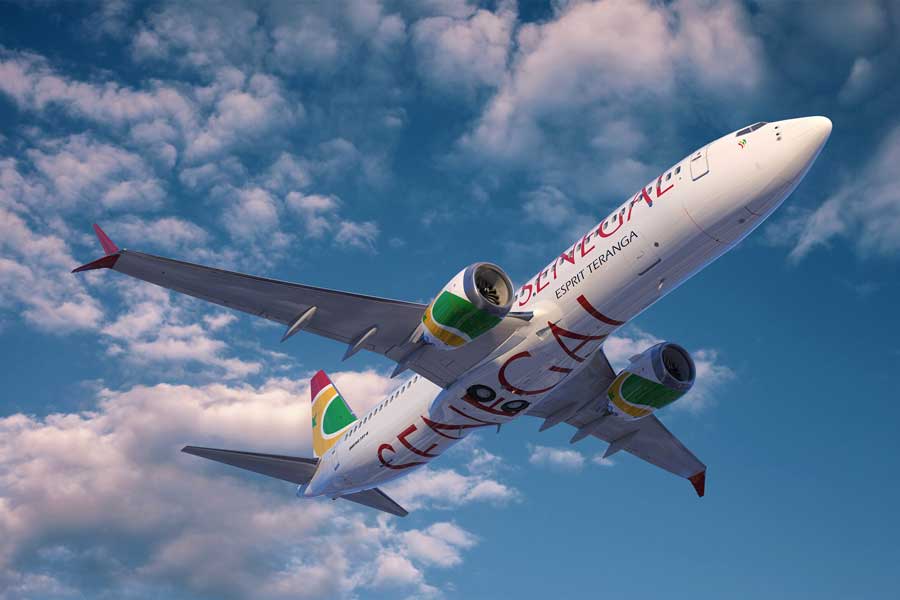
Air Senegal Places Order for 9 Boeing 737-8 Aircraft
The third retired Boeing 777-300ER formerly operated by Japan Airlines (registration: JA735J) departed Tokyo’s Haneda Airport in the early hours of November 11, bound for its buyer at Tucson International Airport in the United States.
As JAL’s flagship for long-haul international routes, the airline introduced 13 Boeing 777-300ERs between 2004 and 2009. With the rollout of their successor, the Airbus A350-1000, JAL has been retiring the type in stages, withdrawing the first aircraft (registration: JA734J) on August 20, 2024, and the second (JA731J) on May 27 this year.
JA735J, the third airframe to be retired, was delivered on July 19, 2006. Its first flight was JL731 from Tokyo/Narita to Hong Kong on August 1 of the same year, and its last flight was JL1, departing San Francisco on September 8 and arriving at Tokyo/Haneda on September 9. After the end of operations, retirement maintenance was carried out over about one month from September 10, and in October a fan tour to view the aircraft was held at Haneda Airport. Its Japanese registration was canceled on October 28, and the aircraft was re-registered as N3243Q under U.S. registry. As a JAL aircraft, it accumulated 9,131 flight cycles and 80,589 hours 30 minutes of flight time.
With the JAL crane logo and other markings removed, the now all-white aircraft pushed back from Spot 212 in front of the JAL hangar at 11:47 p.m. on November 10 for its ferry flight. Waved off by JAL staff holding penlights, it took off from Runway C at 12:01 a.m. on the 11th.
According to Takuya Kutsuzawa of JAL’s Aircraft and Maintenance Procurement Department, Maintenance Group, who oversaw the sale, there is usually about a two-month interval between retirement maintenance and the ferry flight, but this time coordination with the buyer had to be completed in roughly a month and a half due to fleet deployment needs. Kutsuzawa said they improved efficiency by digitizing processes that had previously been checked on paper, noting, “There were some hiccups, but in the end we accomplished the ferry flight without any schedule changes.”

▲Those in charge of arranging the ferry flight (from left): Misaki Yoshida and Takahiko Tsuchiya, JAL Business Aviation, Airport Business Department; and Takuya Kutsuzawa, JAL Aircraft and Maintenance Procurement Department, Maintenance Group
Arrangements for ferry flights of retired aircraft had previously been outsourced to other companies, but since the COVID-19 pandemic they have been handled by JAL Group’s JAL Business Aviation (JALBA), which manages business jet charter, management, and ground handling. For this ferry, the team completed tasks such as coordinating schedules with the buyer, securing slots and parking stands, and notifying relevant government agencies in about two weeks. Takahiko Tsuchiya of the company’s Airport Business Department said, “There’s a desire for aircraft that flew within the JAL Group to be flown by JAL Group staff to the very end.” He added, “I joined because I love airplanes, so honestly I don’t want to see them off—but moments like this inevitably come someday,” watching the departure with gratitude and respect for the aircraft.
As replacement aircraft for medium- to long-haul international services, JAL has ordered 13 A350-1000s—the same number as its 777-300ER fleet. Of these, it has already taken delivery of 10, from the first (registration: JA01WJ) through the tenth (JA10WJ), and deployed them on Tokyo/Haneda–New York, Dallas, London, Paris, and Los Angeles routes. As more A350-1000s join the fleet, the 777-300ERs are expected to be retired in sequence.